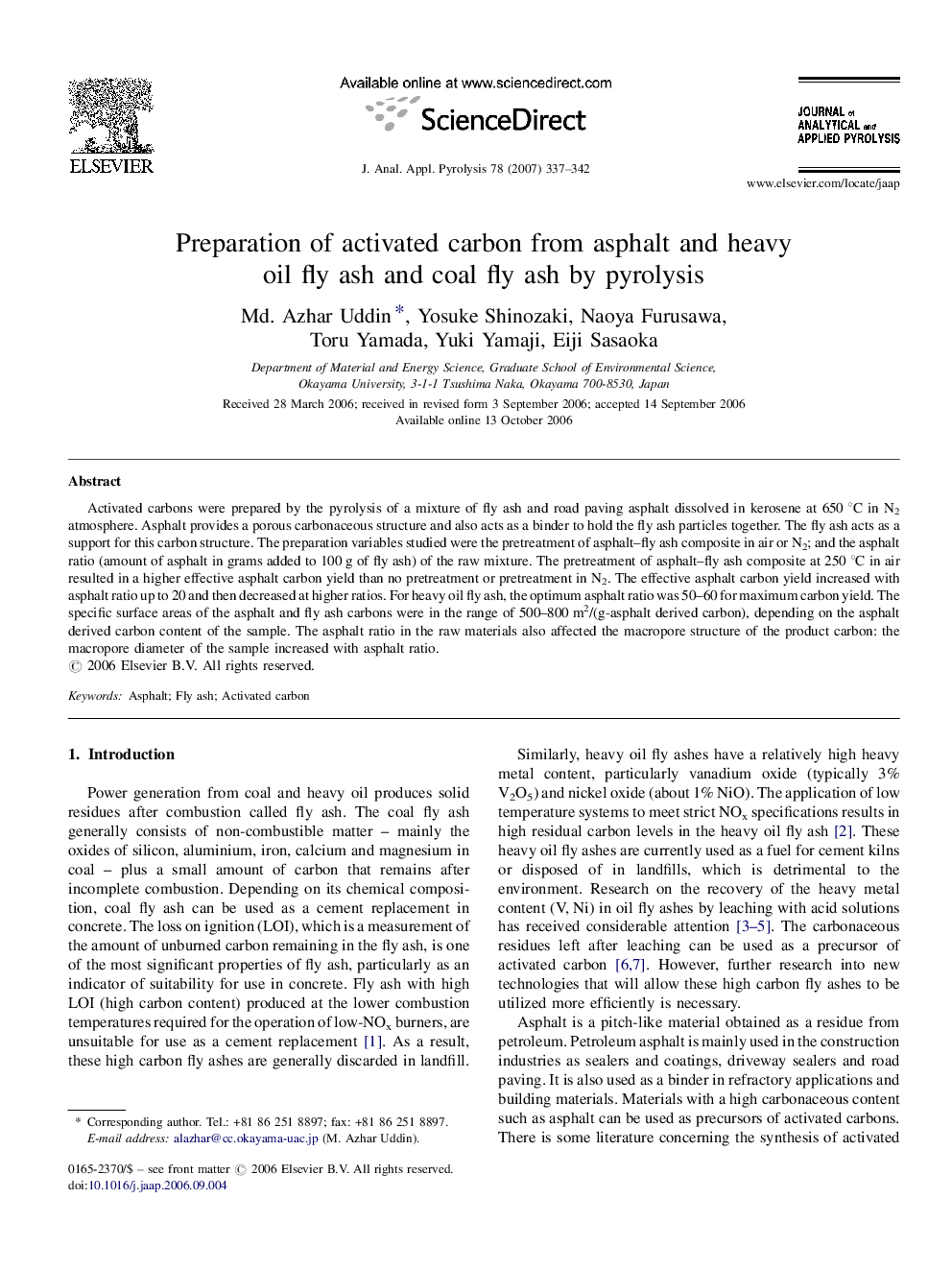| Article ID | Journal | Published Year | Pages | File Type |
|---|---|---|---|---|
| 1198161 | Journal of Analytical and Applied Pyrolysis | 2007 | 6 Pages |
Activated carbons were prepared by the pyrolysis of a mixture of fly ash and road paving asphalt dissolved in kerosene at 650 °C in N2 atmosphere. Asphalt provides a porous carbonaceous structure and also acts as a binder to hold the fly ash particles together. The fly ash acts as a support for this carbon structure. The preparation variables studied were the pretreatment of asphalt–fly ash composite in air or N2; and the asphalt ratio (amount of asphalt in grams added to 100 g of fly ash) of the raw mixture. The pretreatment of asphalt–fly ash composite at 250 °C in air resulted in a higher effective asphalt carbon yield than no pretreatment or pretreatment in N2. The effective asphalt carbon yield increased with asphalt ratio up to 20 and then decreased at higher ratios. For heavy oil fly ash, the optimum asphalt ratio was 50–60 for maximum carbon yield. The specific surface areas of the asphalt and fly ash carbons were in the range of 500–800 m2/(g-asphalt derived carbon), depending on the asphalt derived carbon content of the sample. The asphalt ratio in the raw materials also affected the macropore structure of the product carbon: the macropore diameter of the sample increased with asphalt ratio.
